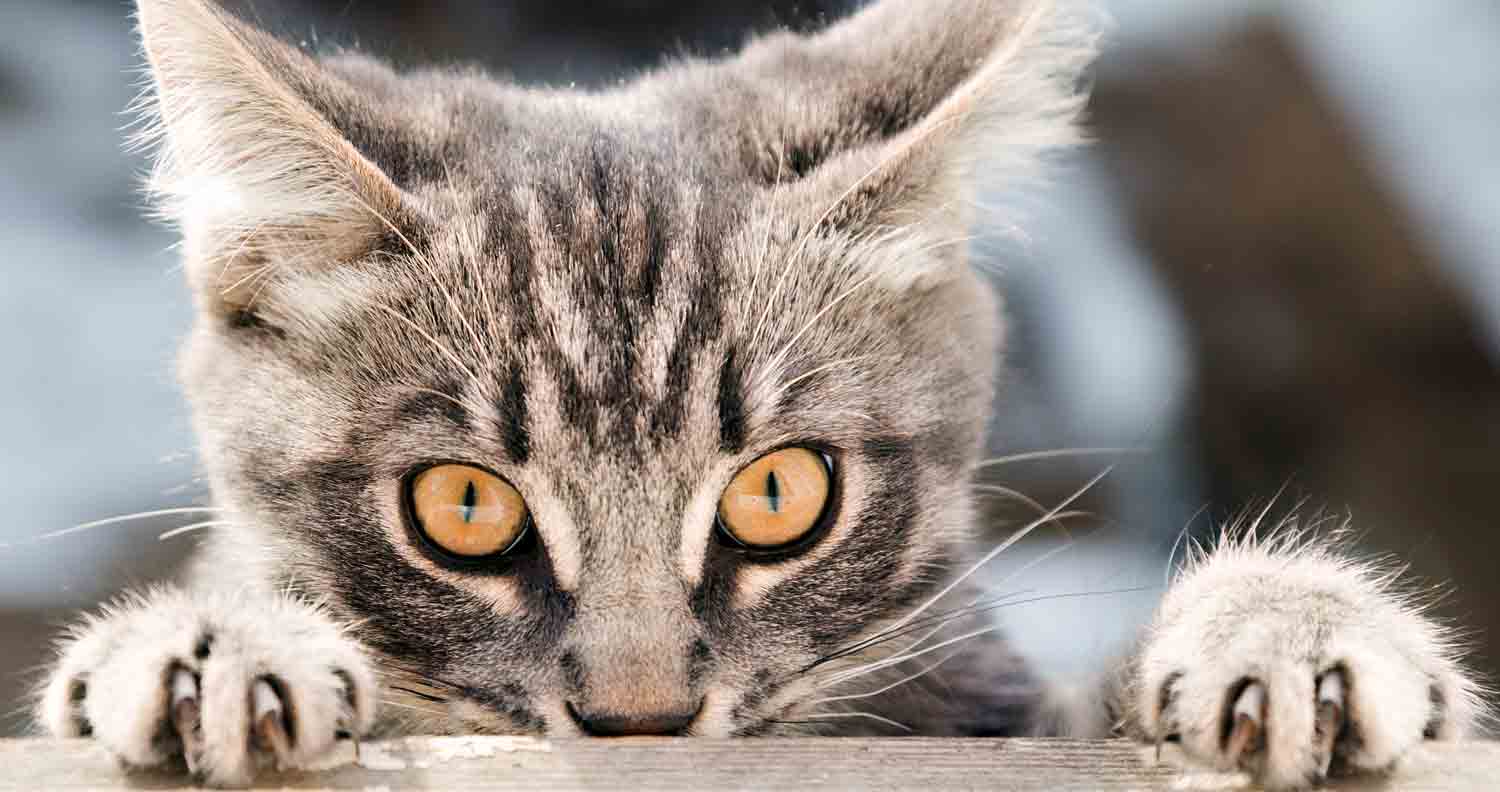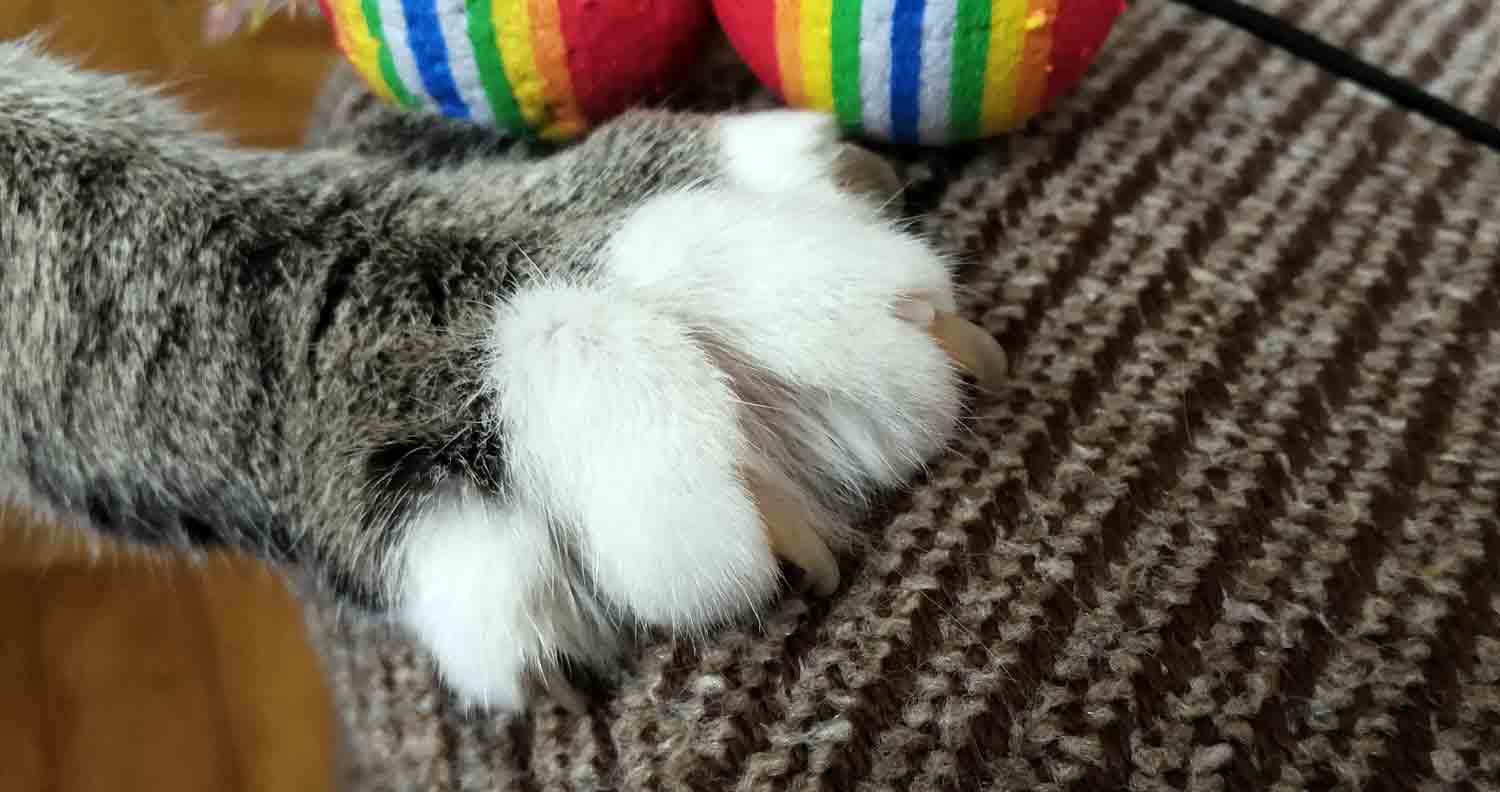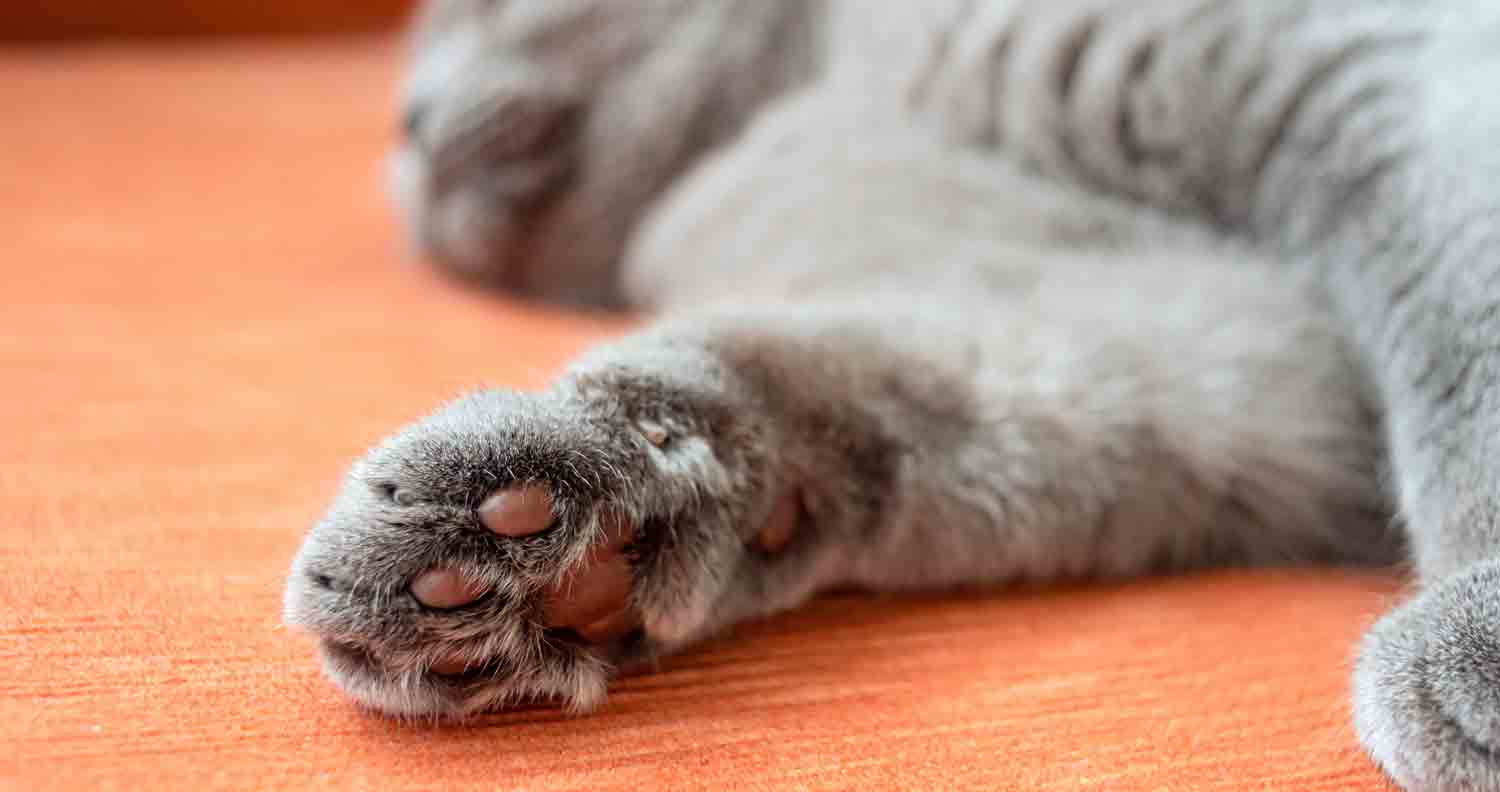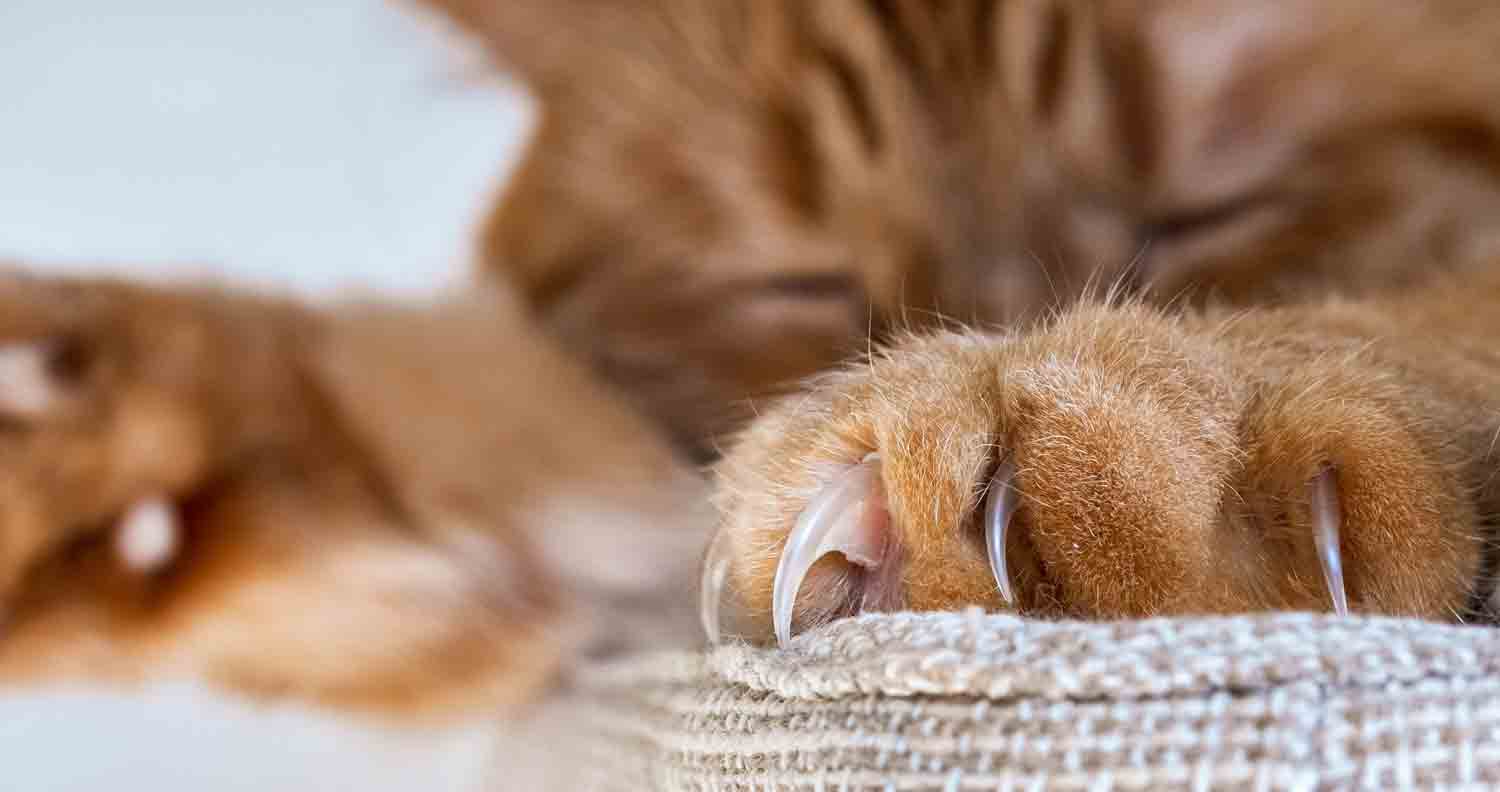How Do Cats Retract Their Claws?
Share:

Just like the big cats (Cheetahs, Lions, Tigers) domestic cats also have claws. These kitty tools, or murder mittens, assist a cat's ability at climbing, protecting against enemies, extra traction, grooming, gripping things, and marking territory. While claws are so useful, they can also cause discomfort to felines. For example, they can catch clothes, upholstery, and curtains.
That's why cats retract their claws when they don't need them, and that goes for both the rear claws and the front paws. They have a sheath integrated into the paw where the claws are retracted when not in use. When the kitty needs to grab the prey or groom itself, it will contract its muscles and tendon to push the claws out. Once they complete the task, they relax the muscles pulling the claws back in the protective sheath. However, not all cats can retract their claws.
Claw retraction is a natural instinct that is still learned. Cats must learn from an early age how to protract and retract their claws. It's not about mastering a special technique, but rather about training and strengthening the muscles and tendons so that they work at their best when the cat grows up. Without practice, these paw parts will be super weak and function poorly. It means the claw will not extend fully and get out of the sheath when retracted.
Young cats find it a breeze retracting because their claws are shorter and their muscles are in peak shape. For older felines, retraction and protraction are more difficult because their claws have grown long and their muscles and tendons have become fragile over time.

Why Do Cats Retract Claws?
Cats retract their claws mostly for practical reasons. Similar to long human fingernails, It's not quite comfortable living with long sharp claws extending from your paw. They can catch furniture and clothes, limiting the cat in movement.
Also, if the claw catches something while the cat is running, it may easily break causing insane pain and depriving the feline of a useful tool. That's why the cat will keep its claws inside the sheath to protect them. It's a precious tool and weapon that it wants to use only on special missions.
Retracted claws also allow the cat to move stealthily. If claws were out, paws would cause more noise. Protraction and retraction are done with the help of paw muscles, tendons and ligaments. Depending on whether they are relaxed or tensed the claw will be outside or inside the sheath.
Muscles
The main participants in retraction are the dorsal elastic ligaments. The brain impulse forces them to shorten, pulling, thus, the clawback. As we have mentioned above, protraction is an active and energy-consuming process. It is performed by the flexor and extensor muscles that roll up and push the claw outwards. It's worth mentioning that if one of these muscle groups fails to flex, the claw will not extend. They need to act together to make protraction happen.
Retraction is individual to each feline. It depends on the shape of the cat's distal and middle phalanx. The latter restricts the mobility of the former. If the cat has a big medium phalanx, the distal phalanx, which includes the claw, will have less room for moving backward. In other words, the claw may fail to retract fully. The length of the claw plays a role here as well. If it's very long, its tip may remain outside after retraction. If it's medium or small-sized, it's likely to retract fully.

Get 30% off and FREE shipping on cat food!
U.S.A. only
To Find out why we recommend chewy.com, click here

Protraction and retraction
Protraction is the process of releasing the claw from the paw. When the cat needs to climb, groom its fur, mark territory, or kill a mouse, the paw muscles and tendon get contracted, forcing the claw forwards and fixing it in place. This is more an impulse that happens subconsciously. Retraction is also an impulse and happens once the feline finishes to climb a fence, groom itself or capture its prey. It will immediately hide its claws to protect them from damage, obtain more freedom in movement, and spare energy.
Sparing energy is one of the reasons, among many, why cats retract their claws. The point is that during protraction their muscles and tendons are tensed. They need much energy to stay contracted and function at their best. In the retracted position, though, the muscles are relaxed which explains why cats prefer to pull back their claws.
How To Stop My Cat from Protracting its Claws?
Home cats use their claws less often than jungle cats. Nonetheless, some of them can develop the habit of protracting the claws even when there is no need for it. For example, they can scratch the wooden floor or kitchen countertop or rip the curtain with its sharp claws.
Trimming your cat's claws is a big factor in limiting damage BUT trimming must be done correctly and we go into that in detail in this "how to trim your cat's claws" guide.
There are also some things you can do to stop any destructive behavior.
When your kitty scratches at a valuable asset, order it loudly and firmly to walk away, then leave the room. This should let your cat know that you disapprove of its action and got highly disappointed in it. If it values your relationship, it should stop scratching immediately.
Besides, the high-pitched voice can scare the cat forcing its claws to retract automatically. While it may not work from the first time, use high-pitched sounds every time your naughty pet scratches at something.

However, we would certainly suggest a positive reinforcement approach first.
A good idea to minimize damage is to cover the floor with carpets and rugs, in case it's bare. In the case of countertops, cover them with anti-scratch film. Also, give your cat a scratching post so that it can channel its energy into them rather than into furniture. After all, a scratched toy is much better than a scratched sofa. Since they are prone to be ripped and scratched, buy cheap toys or make DIY ones.
You can also consider trying out nail caps, but with a word of warning, you may find these incredibly difficult to put on. Plus, if your cat goes outside caps may affect self-defense against other animals in their territory.
We have also compiled this really useful all about cat claw caps and covers.
How Do Cats Retract Their Claws: Summary
I hope this has answered the "how do cats retract their claws" question fully. To summarise, a cat's claws can be conveniently retracted to allow the feline to move freely and quietly and avoid catching different stuff that can break the claws. The retracting process involves the dorsal elastic ligaments that are forced by adjoining muscles to shorten and drag the claws backward.
Once retracted the claws end up in a protective sheath. While domestic cats keep their claws mostly retracted, some of them tend to keep them out and scratch household surfaces for fun. If your cat has the same habit, follow the above-mentioned cat tips to deter it from doing that.

Get 30% off and FREE shipping on cat supplies!
U.S.A only
To Find out why we recommend chewy.com, click here
Affiliate disclosure : We Love Cats and Kittens is a participant in several affiliate programs including the Amazon Services LLC Associates Program, and the Chewy affiliate program. These are affiliate advertising programs designed to provide a means for sites to earn advertising fees by advertising and linking to products on their sites. If you click on links in our blog posts and articles we may be paid a commission.
Share:

